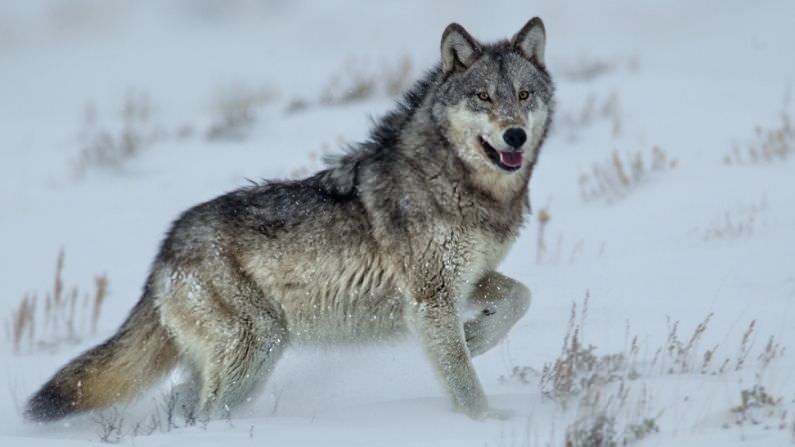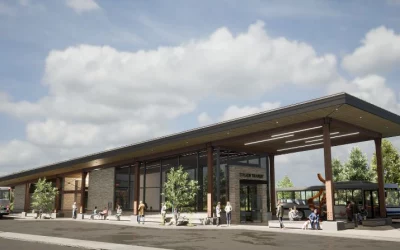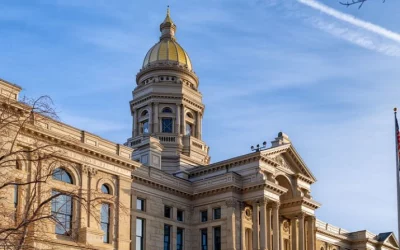SPET Options Mulled
Jackson Hole officials are beginning to discuss what, if anything, should be on a Special Purpose Excise Tax (SPET) ballot in upcoming elections. Whatever is agreed upon could result in much-needed capital needs investments in Teton County.
Expanding the local courthouse, a new fire department facility in Hoback and affordable housing projects were all mentioned as potential areas a SPET tax could put money towards during a joint town and county meeting with elected officials Monday. Teton County residents have a history of supporting these more specific revenue-generating measures in the past, as opposed to more general initiatives like increased sales taxes. Teton County Commissioner Mark Newcomb said he supports long-term planning projects at the school district as funding from Cheyenne becomes more uncertain.
“The fact is that the source of revenue for the school district’s capital needs has shrank, if not completely evaporated elsewhere in the state, and that the burden is falling on the community now,” Newcomb said. “I think we really have to put the needs of a growing school district reflecting our growing community at the forefront of our SPET item discussions.”
Finalizing exactly what might make it onto citizens’ ballots is still a ways off, as officials also need to decide when they want to put the initiatives on a ballot. Currently, $19 million is spent on SPET projects in Teton County per year.
Nonprofits Continue to Struggle Amid COVID Surge
Local elected officials heard from many of Teton County’s most vital human services organizations during a joint town and county meeting Monday. For many nonprofits around the valley, staffing remains a major issue, strained further by the biggest surge of COVID-19 cases at any point during the pandemic.
“People are retiring. People are going away for the winter because they’re in that semi-retired status,” said Becky Zaist, executive director of the Senior Center of Jackson Hole. “So, we are having a hard time filling the needs for home care in town.”
“We’ve had no response whatsoever to any of the [job] ads we’re running in the paper,” said Smokey Rhea of the Curran Seeley Foundation.
“Unfortunately, COVID management is quickly taking urgency over our mission-driven work, which is concerning,” said Liana Moskowitz of the Community Safety Network.
Several town organizations are raising salaries to try and attract workers to no avail. Others plan on expanding their budget requests at the county or town level to compensate for uncertain funding from the state. By and large, nonprofit leaders said the needs of the community are up across the board, including for behavioral health care, food delivery and housing assistance.
Yellowstone Wolves Killed by Hunters in Record Numbers
Twenty of Yellowstone National Park’s gray wolves have been killed in recent months. That’s the most to be shot in a single season since the species was reintroduced to the region more than 25 years ago.
One wolfpack has been declared “eliminated” after hunters shot most or all of its members in a two-month span. Now, an estimated 94 of the apex predators remain in Yellowstone with several months left to go in this year’s hunting season. The animals are protected within the boundaries of the national park but can be killed when they cross outside its borders, and Montana Gov. Greg Gianforte recently loosened wolf hunting regulations statewide.
Superintendent of the park Cam Sholly is calling for trapping and shooting near the park to be limited, describing recent deaths as a setback for the species’ long-term viability. The U.S. Fish and Wildlife Service also announced last year that it will reexamine whether the gray wolf should be federally protected as an endangered species.
Wyoming Petitions Feds for Grizzly Delisting
Wyoming Gov. Mark Gordon has officially petitioned the U.S. Fish and Wildlife Service to remove the Greater Yellowstone Ecosystem’s population of grizzly bears from the Endangered Species List, his office announced Tuesday.
State Discusses ARPA Funding Plans
State officials addressed American Rescue Plan funding coming into Wyoming’s coffers during a press conference earlier this month. Gov. Mark Gordon released his recommendations in December and said he would be sending them to the legislature for consideration in the coming weeks. Gordon also outlined the key sectors he’d like to see the Cowboy State invest in, including health, education, water and entrepreneurship. Renny MacKay, policy director for the governor, said there are a lot of options for how those dollars could be spent.
“Here we are with an opportunity with those dollars are now appropriated and out from the federal government. And so because of the federal programs, there are new programs and then there is expanded funding for states, counties, cities and tribes,” he said.
Teton County residents are already submitting their recommendations for how local disbursements should be spent. The housing advocacy organization Shelter JH, for example, said in a letter that the funds should be dedicated to improving sewage infrastructure and expanding affordable housing developments and programs.
Nordic Trails Fully Open to the Public
Recent heavy snowfall means more than powder turns at the resort. It also means now is a great time to hit the more than 200 miles of groomed, mellower trails in the area, according to Nancy Leon of the JH Nordic Alliance.
“It’s a very accessible sport. So, these winter trail sports being human-powered, you’re not paying for lift tickets. It is easy for people to learn, the equipment is less expensive,” Leon said. “And so in terms of just being accessible and inclusive, these are just, again, great ways to really get out and appreciate the beauty of winter.”
The alliance’s annual day to try cross-country skiing, fat tire biking and snowshoeing at Turpin Meadow Ranch was canceled due to COVID-19 concerns, but Leon said there are still plenty of options to go exploring and try a sport you haven’t experienced before. Nordic skiing, as with other outdoor activities, has exploded in popularity recently, so Leon said it’s also important for folks to recreate responsibly and be respectful of others.
“A lot of our trails are multi-use, so whether you’re walking with your dog, if you’re on snowshoes, if you’re on your cross-country skis, if you’re on your fat bike, you know, just saying hi, being friendly, being respectful, giving people space, giving wildlife the space — those kinds of things are really important to sustaining our nice balance in our community,” she said.
To avoid the crowds, check out jhnordic.com for other groomed options outside the most well-known areas. Leon also reminds folks to remain safe near avalanche-prone slopes and areas, something often overlooked in the sport of nordic skiing.
Wilson Artist Hits Casper Gallery
A local artist is representing northwest Wyoming in a unique exhibit now on display in Casper. Suzanne Morlock of Wilson is one of 10 artists from across the state featured in “Immersive Installations,” a show of 10 multisensory and three-dimensional works of art. Morlock’s installation is called “Uncontained: The Dance of the Chronically Ill,” and is inspired by her family’s lived experience.
“This particular piece highlights using a lot of medical detritus that I’ve saved through the years, because I like to use recycled, repurposed materials,” Morlock said. “I feel like there’s a lot of power in these actual items that either contained pills or delivered certain kinds of medicines or in some way informed the attempts to get beyond this sort of chronically ill state.”
Morlock also uses her work as a platform to advocate for Medicaid expansion in Wyoming, a move that passed the State House of Representatives for the first time last year but was then killed by a Senate committee. The issue is expected to be considered again during the upcoming budget session starting in February.
“Immersive Installations” will be on display at the Art 321 Gallery in Casper through Feb. 26.






